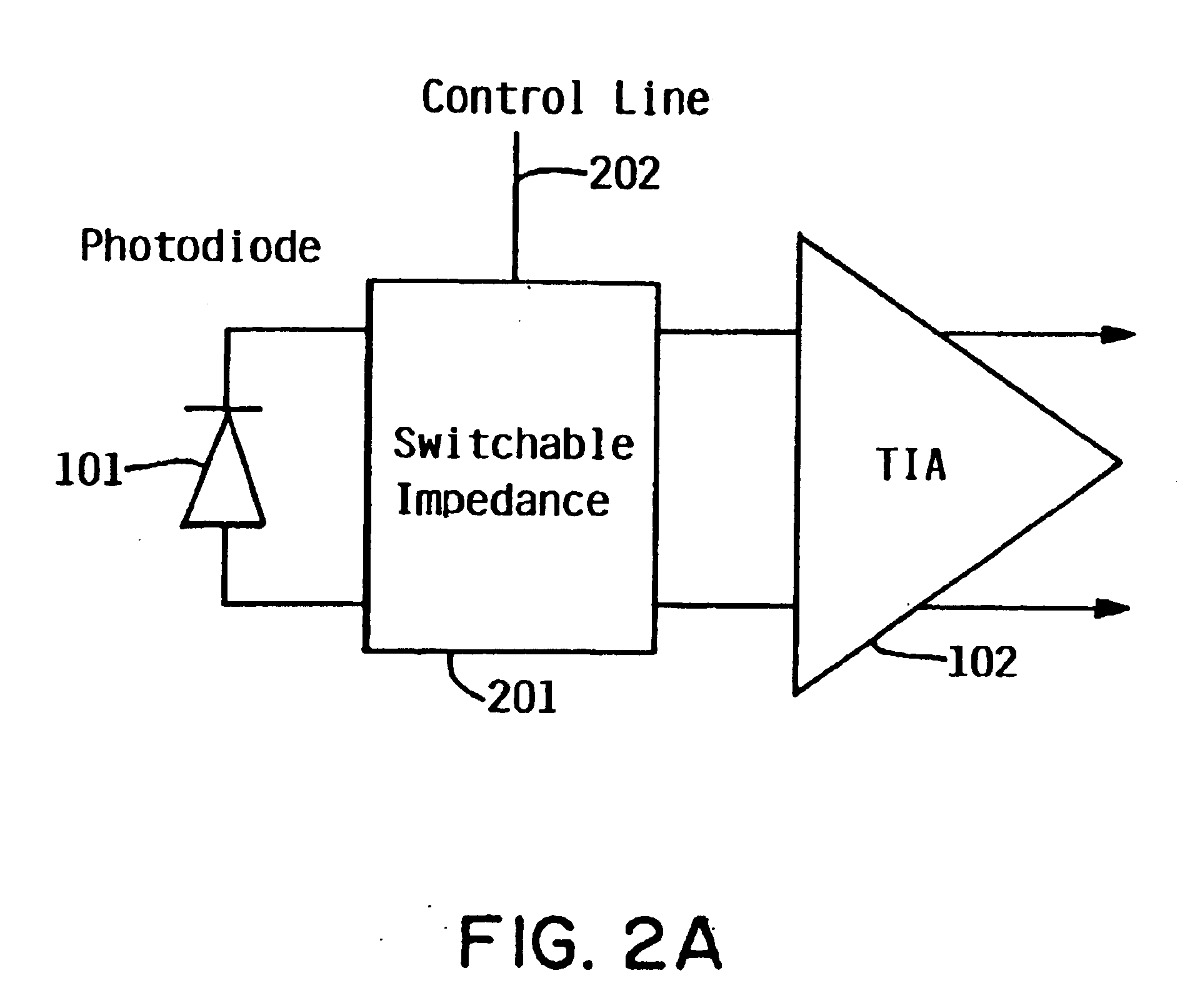Switchable-bandwidth optical receiver
a transceiver and optical receiver technology, applied in the direction of pulse technique, instruments, using reradiation, etc., can solve the problem of not being able to achieve the standard-compliant operation of multiple bit-rates, the maximum receiver bandwidth limit of 1.5 ghz is not previously overcome, etc., to achieve the effect of higher performan
- Summary
- Abstract
- Description
- Claims
- Application Information
AI Technical Summary
Benefits of technology
Problems solved by technology
Method used
Image
Examples
Embodiment Construction
)
The invention will now be described in more detail by way of example with reference to the embodiment(s) shown in the accompanying figures. It should be kept in mind that the following described embodiment(s) is / are only presented by way of example and should not be construed as limiting the inventive concept to any particular physical configuration.
FIG. 1 illustrates a typical optical receiver front-end. An optical receiver “front-end”” consists of a photodetector 101 (e.g., p-i-n, MSM, APD, etc.) coupled with a preamplifier circuit 102, typically implemented in a transimpedance amplifier (TIA) configuration. The photodetector 101 converts incident light into an electrical current that the preamplifier circuit 102 transforms into a voltage signal output with a peak-to-peak amplitude in the mV range. This general optical receiver front-end topology is depicted in FIG. 1.
Three general methods by which the bandwidth of an optical receiver can be controlled will be described according...
PUM
 Login to View More
Login to View More Abstract
Description
Claims
Application Information
 Login to View More
Login to View More - R&D
- Intellectual Property
- Life Sciences
- Materials
- Tech Scout
- Unparalleled Data Quality
- Higher Quality Content
- 60% Fewer Hallucinations
Browse by: Latest US Patents, China's latest patents, Technical Efficacy Thesaurus, Application Domain, Technology Topic, Popular Technical Reports.
© 2025 PatSnap. All rights reserved.Legal|Privacy policy|Modern Slavery Act Transparency Statement|Sitemap|About US| Contact US: help@patsnap.com



